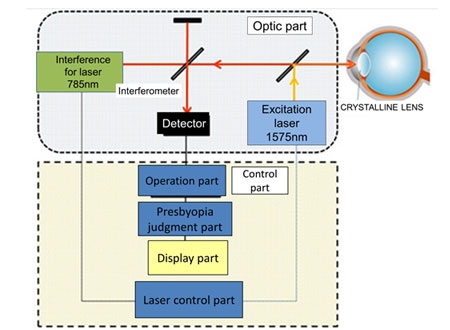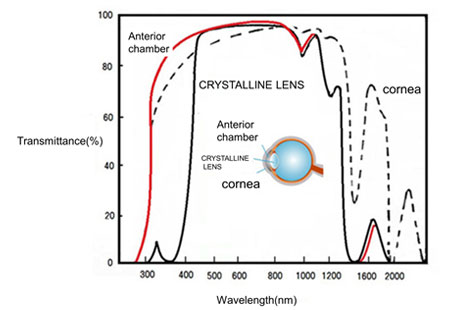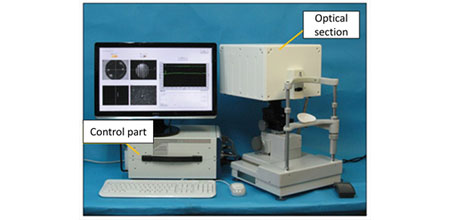Jun. 29, 2016
Presbyopia Detection Device Using the Crystalline Lens
RIKEN No.: 08168
Inventors
Satoshi Wada (RIKEN Advanced Photonics Technology Development Group), Kazuo Tsubota, Atsushi Shinjo (Keio University)
Background
Presbyopia has an impact on about half of the Japanese population aged 40 years or older. Presbyopia is diagnosed by subjective tests, and is not assessed quantitatively. In addition, appropriate treatment cannot be performed because it is difficult to grasp the specific presbyopia progression, and therefore there is a need for quantitative assessment of presbyopia. Presbyopia is caused by the fact that the crystalline lens is cured due to aging and the adjustment force decreases. Therefore, the measurement of the elasticity of the crystalline lens can make quantitative diagnosis possible.
Summary
It is said that presbyopia occurs due to the denaturation of the proteins constituting the crystalline lens, leading to a loss of the elasticity. Knowing the elasticity of the crystalline lens enables the diagnosis of presbyopia. The method for the elasticity measurement of the crystalline lens is that a weak pulse laser beam is irradiated onto the crystalline lens, and the state of the crystalline lens is measured by using the generated photo-acoustic wave. The displacement of the crystalline lens by a photo-acoustic wave is measured in a non-contact manner using the interferometer of the light, the elasticity value is derived from the properties of the displacement, and the presbyopia is diagnosed.

Fig.1: Elasticity Measurement Block Diagram of the Crystalline Lens

Fig. 2: Transmittance of Light in Each Part of the Eyeball

Fig. 3: Quantitative Presbyopia Diagnosis Device Clinical Assessment Device
Merits
- The elastic state of the crystalline lens can be quantitatively grasped.
- The elastic state of the crystalline lens can be instantaneously grasped.
- Diagnosis is available in a non-contact manner.
Applications
- Application to the Development of Anti-Aging Drugs, etc.
- Detection of Changes of the Crystalline Lens due to Ultraviolet Rays
- Measurement of the Elastic Properties of Polymer Materials
References
- 1. Japanese patent application No.2013-147897
- 2. Chunhui Li et al. “Noncontact all-optical measurement of corneal elasticity,” Opt. Lett. 37, 1625-1627(2012).
